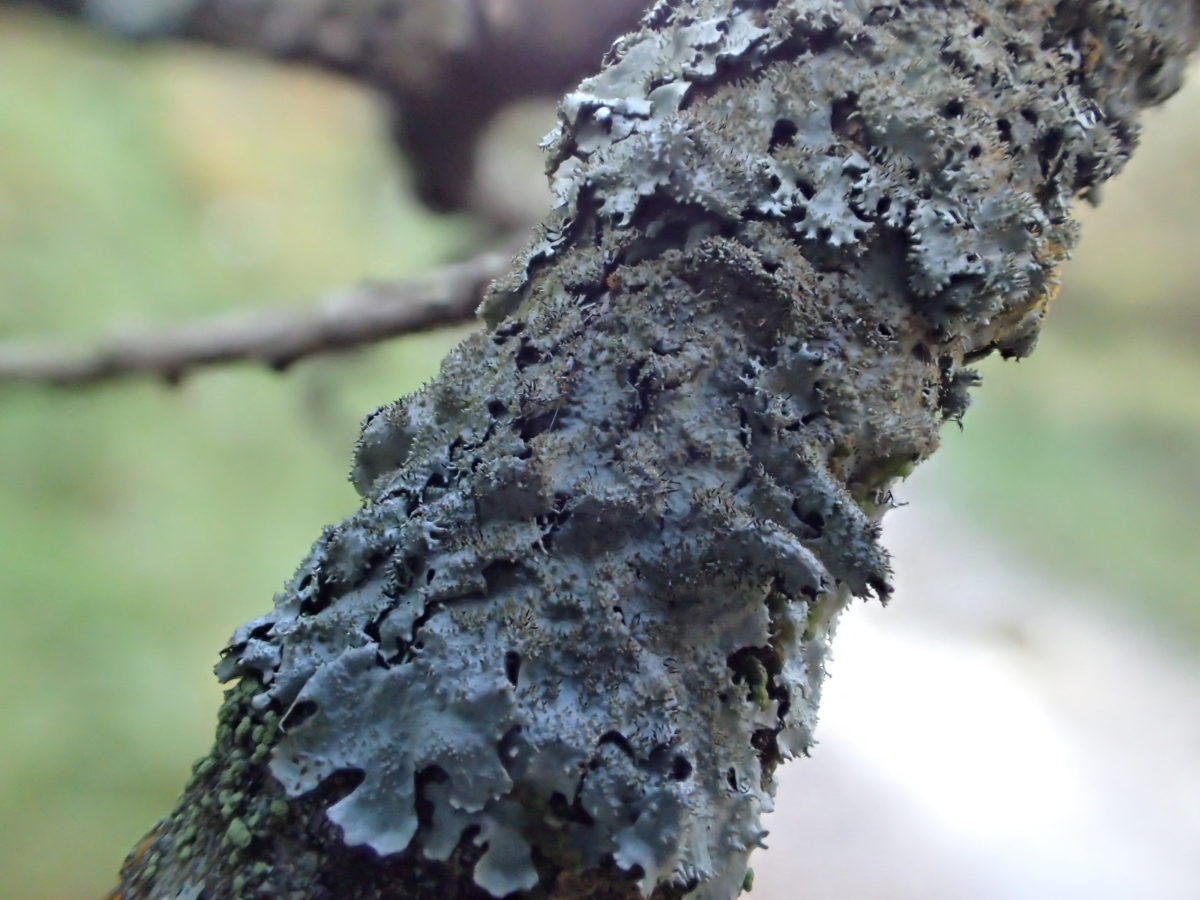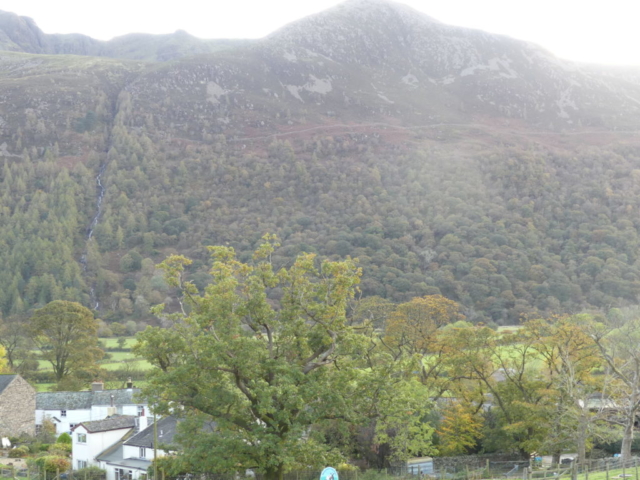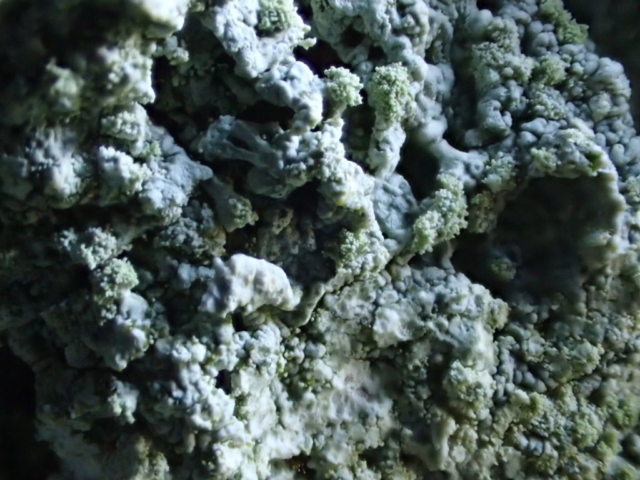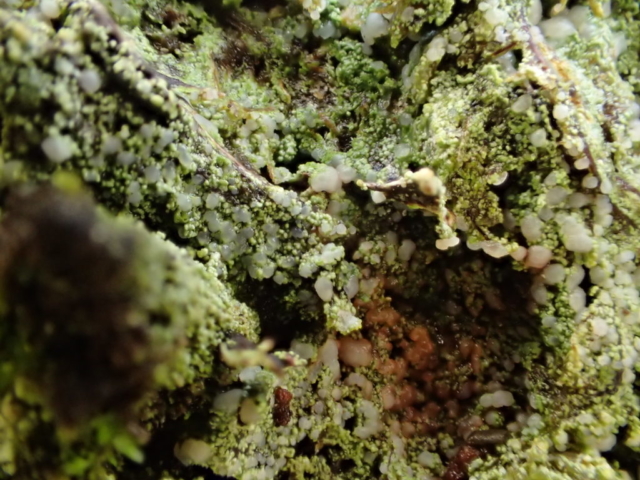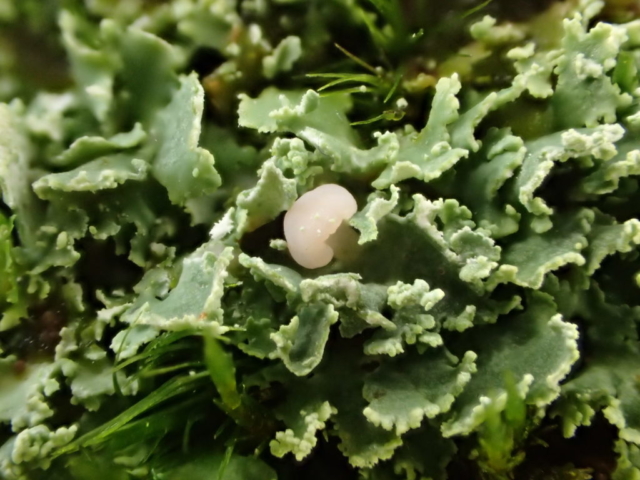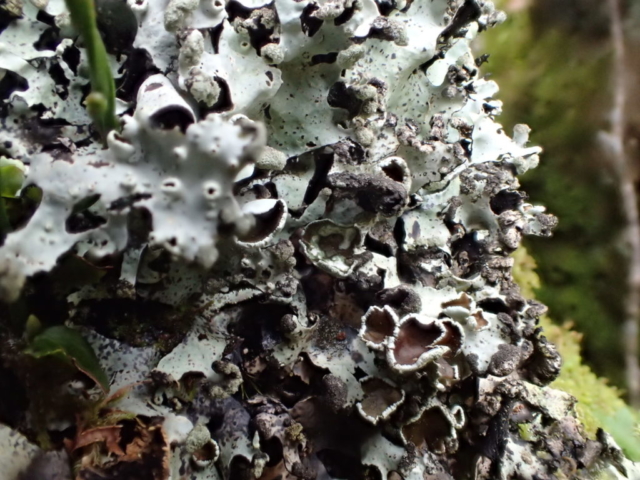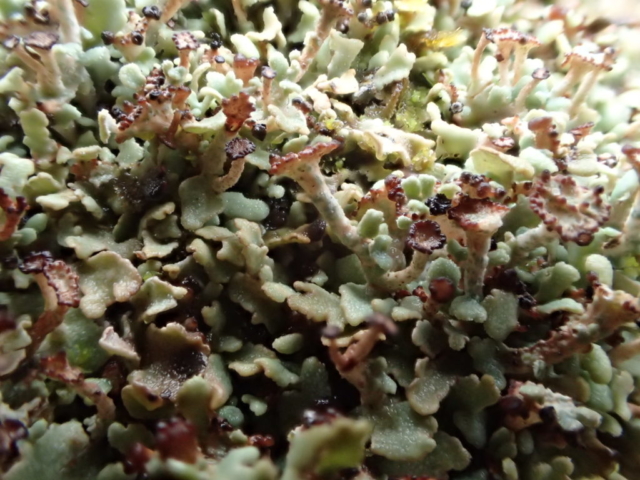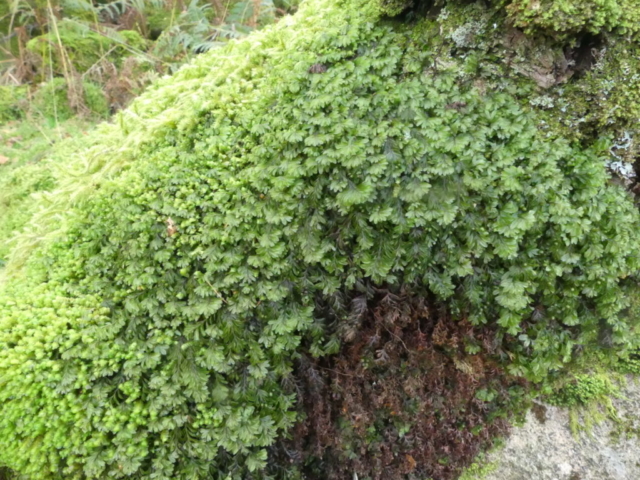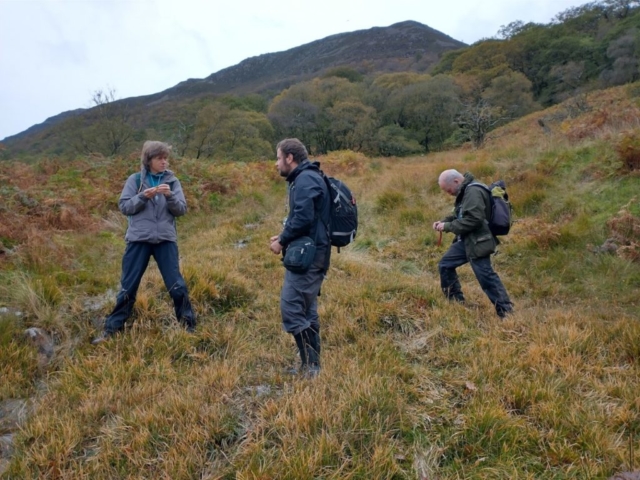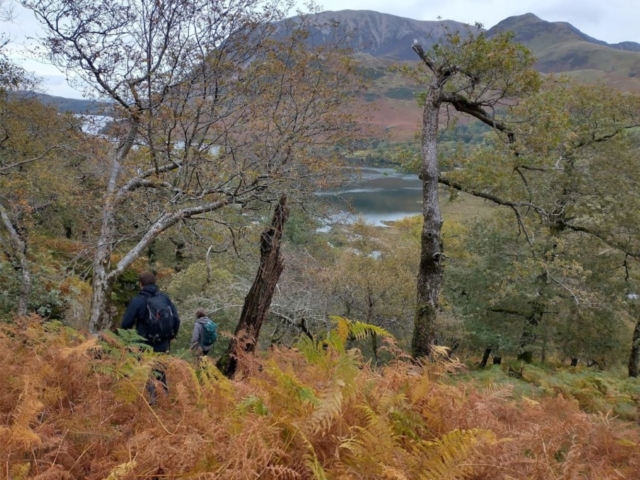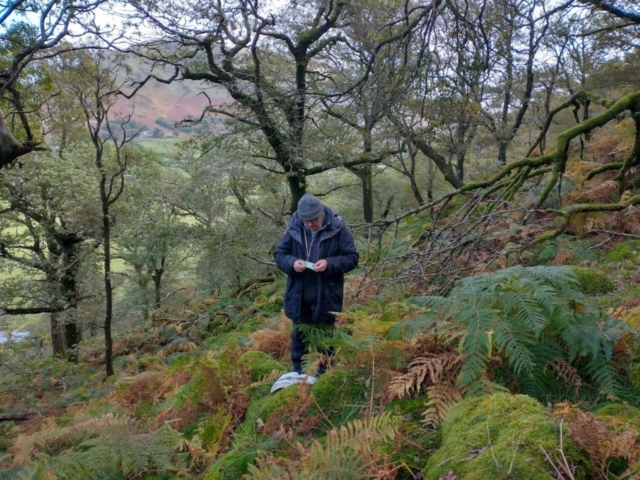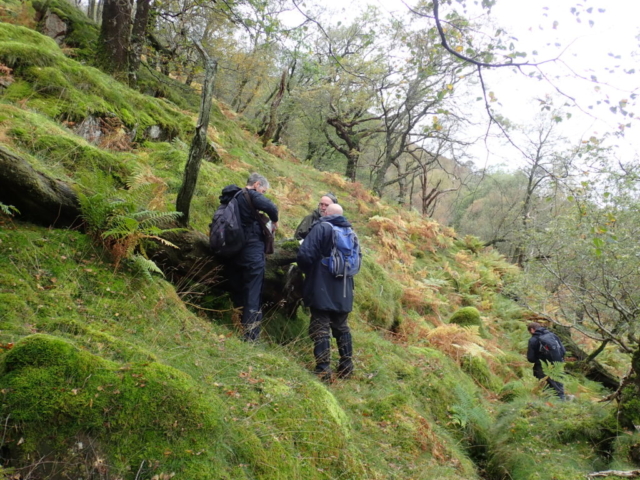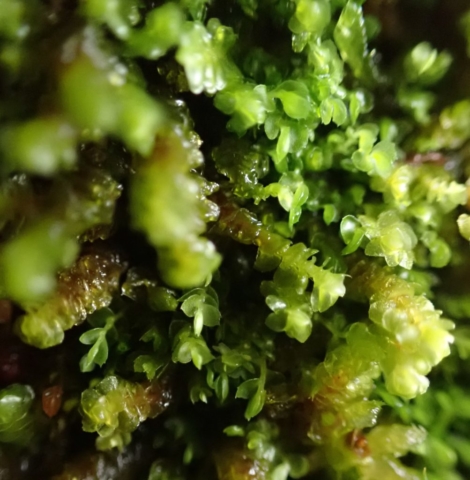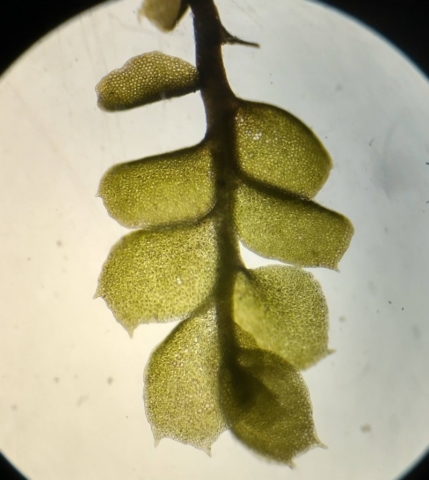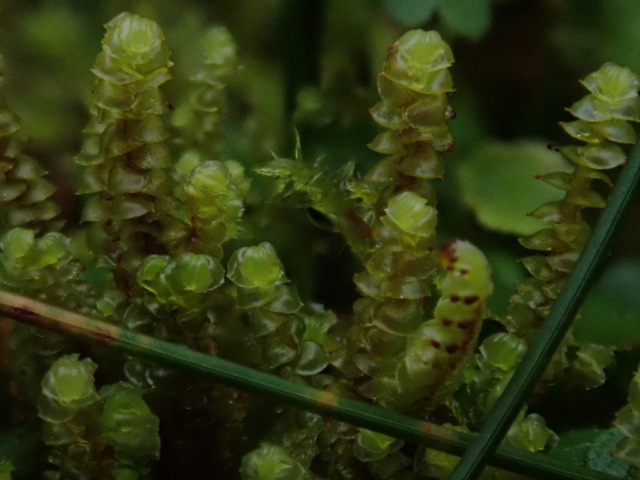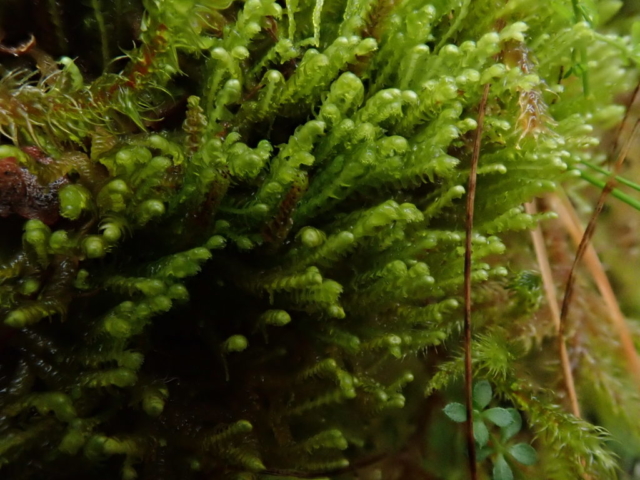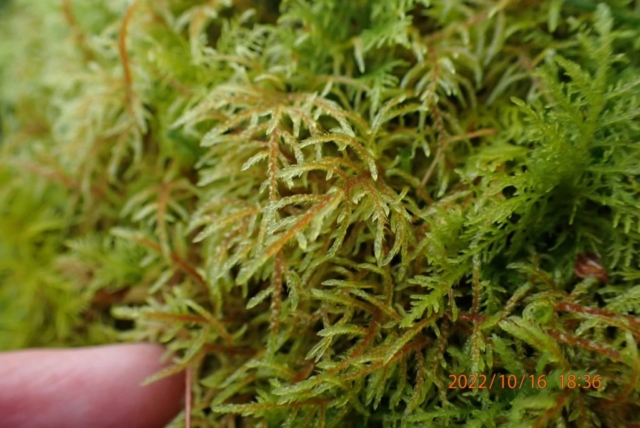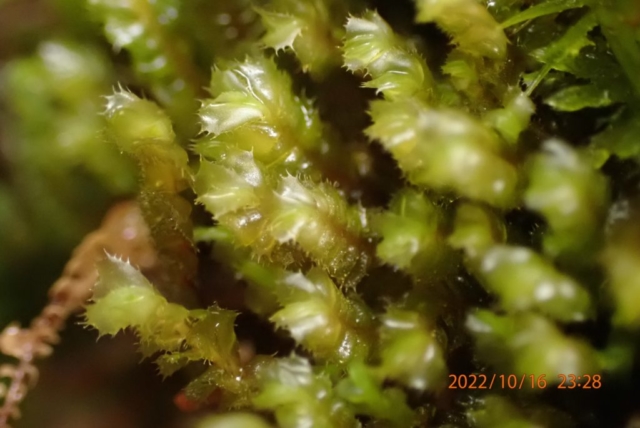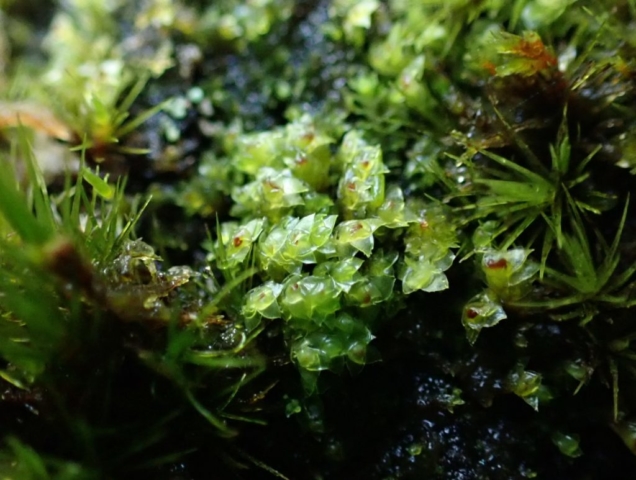Lichen Report
With remarkable timing, our field trip to Scales Wood near Buttermere had a break in the weather, sandwiched between days of rain. Although a long journey for many, we had a good turnout with a mixture of beginners and more experienced group members. The site is a good oceanic north-east facing wood primarily of acid-barked oak and birch set between 100m and 300m above sea level. We went up through the vegetated boulder field to about half-way up as the sessile oaks give way to birch, and eventually found over 80 lichen species on the mossy trees, rocks and outcrops. This figure includes a few species on the stone bridge at the edge of the site, with Placynthium nigrum on the mortar for example.
Star of the show was the rare oceanic Parmelinopsis horrescens known from Scales Wood as its most northerly location in the UK: nationally scarce and near threatened. One of the Parmelia group, it has grey-green lobes with no pseudocyphellae but with conspicuous isidia and black cilia on the upper surface. It blended in with the other foliose lichens on the twigs and bark, so required careful inspection to find it. We checked that it did the expected KC+ pink reaction. It’s not been seen elsewhere in the Lakes, but perhaps we need to look harder. There is an even rarer P. minarum which looks the same, with no cilia but has a C+ pink medulla. Parmelia ernstiae was present as well: this looks similar, also without cilia.
The site is designated as an SSSI primarily because it is the largest and least modified example of highly oceanic birch-sessile oak woodland in the Lake District. At its last assessment in 2014, it was in unfavourable condition (no change) due to poor wood structure ie a lack of tree regeneration as there was no stock-proof barrier. As per the survey, we found plenty of dead wood but very few saplings and a couple of sheep present. This issue of under grazing or over-grazing is tricky: too much grazing and there’s no re-gen; too little and the base of trees and ground flora can be shaded, which will affect some lichens. Only slow re-gen is needed, but I think we’ll have to accept some shading if we want new trees to grow so the wood can survive in the long term. Thankfully we saw no Rhododendron. And happily there was no sign of nitrogen enrichment in the main wood ie no Xanthoria or Phaeophyscia, with only one instance of Physcia tenella next to the farmland. The birches higher up were reminiscent of the west coast of Scotland, with a lush Parmelion community covering every inch of bark. We found oceanic specialist Hypotrachyna taylorensis on one oak. We didn’t re-find the only Cumbria record of “Lob scrob” from 1961 – always a long shot.
There were plenty of opportunities for learning, with Parmelia, Flavoparmelia caperata, Ochrolechia tartarea, O. androgyna and Mycoblastus sanguinarius present, along with plentiful Hypotrachyna laevigata with one instance found fertile. Micarea can be tricky but we found relatively distinctive M. alabastrites with white apothecia (C+ red) on several trees and M. stipitata with white stalked pycnidia. Cladonia caespiticia was found with its distinctive mushroom-like apothecia. Lovely mounds of Cladonia were deemed to be fertile C. subcervicornis after some wrestling with the key. And fertile Cladonia parasitica was found on dead wood with an instant K+ yellow reaction along with Pd+ deep yellow. Bunodophoron melanocarpum was present on rock and birch. This, along with several species fertile, means many happy lichens.
The happy lichenologists, looking back at the wood, saw many unexplored areas to either side – plenty of scope for further visits…
Text and photos, Chris Cant
Bryophyte Report
Despite Scales Wood being one of the largest and least modified examples of oceanic woodland in the Lake District, and an SSSI for that reason, it is surprising that only 41 species or bryophyte appear have been recorded for the tetrad. Our group of six therefore set out with modest expectations, but determined to fill some gaps in the records.
Once over the bridge, our first stop at a large rock gave us all the opportunity for some revision of commoner species and produced the first interesting liverwort of the day, Orthocaulis (Barbilophozia) atlantica with its striking red gemmae. Hyocomium armoricum was also found in a small watercourse here. Moving up the steep slope into the woodland, the abundance of bryophytes on trees, rocks and the ground soon became apparent, suggesting this was going to be a very interesting wood. Early finds included Hylocomiastrum umbratum, Bazzania trilobata, Plagiochila spinulosa and Saccogyna viticulosa . Scapania gracilis was extremely common on tree trunks and on rocks, together with extensive carpets and frequent hummocks of Sphagnum species (particularly S palustre and S quinquefarium) on the ground all indicating just how humid the woodland is. Precipitation here is over 2 metres per year! Several trees with the characteristic ‘brackets’ of Plagiochila punctata were also found. Dead wood had surprising amounts of the tiny Scapania umbrosa, together with Riccardia palmata and Cephalozia (Nowellia) curvifolia.
As we got higher and deeper into the wood, more exciting finds were made. Large areas of the slope are occupied by block scree covered in a carpet of bryophytes with Wilson’s Filmy-fern Hymenophyllum wilsonii quite frequent. Bazzania tricrenata, initially spotted as a tiny clump, was soon being found regularly, often growing through other liverworts such as Mylia taylorii. Anastrepta orcadensis was also quite frequent, its red gemmae giving it a superficial resemblance to Orthocaulis atlantica, but quite obvious differences in leaf shape and orientation were visible on closer inspection. We also found good patches of Hageniella micans, a moss which in England is only known from here and Borrowdale. The real star finds were Harpanthus scutatus, which is mentioned in the SSSI citation, and one tiny patch of Pseudomarsupidium (Adelanthus) decipiens, possibly a new location for this species.
Towards the end of the day we reached Near Ruddy Beck hoping for some different species. Sadly we did not find Jubula hutchinsae which has been recorded in the wood, but did find Andrea hookeri (alpina) growing on a boulder, and possibly Plagiochila bifaria growing on a log overhanging the beck. Heading down out of the woodland towards the track home, we crossed a boggy area with a range of different Sphagnum species, including S papillosum, S inundatum, S compactum and possibly S platyphyllum, which if confirmed would be the first record for VC70.
The final tally for the day was nearly 80 species (with several samples still awaiting examination). All in all, a most enjoyable visit to an exceptional wood.
Kerry Milligan
Photos: CS=Clare Shaw, KM=Kerry Milligan
